We got the chance to review and test the new Dwarf II from Dwarflab, a diminutive package with a lot of promise, according to the publicity behind it.
Smart telescopes – telescopes that can automatically track the sky and take images of deep-sky targets, the Moon and, to a lesser extent, the planets – have exploded in popularity in the last few years.
The Dwarflab Dwarf II is supplied in two variants, Classic and Deluxe, and we reviewed the Deluxe package.

The Classic package consists of the Dwarf II smart telescope, a tripod, one rechargeable battery, a micro SD card with card adaptor, and a soft carry case.
The Deluxe version adds a magnetic filter holder, two neutral-density (ND) filters for solar observing/imaging, an ultra-high-contrast (UHC) filter to help with imaging under light-polluted skies, and an additional battery.
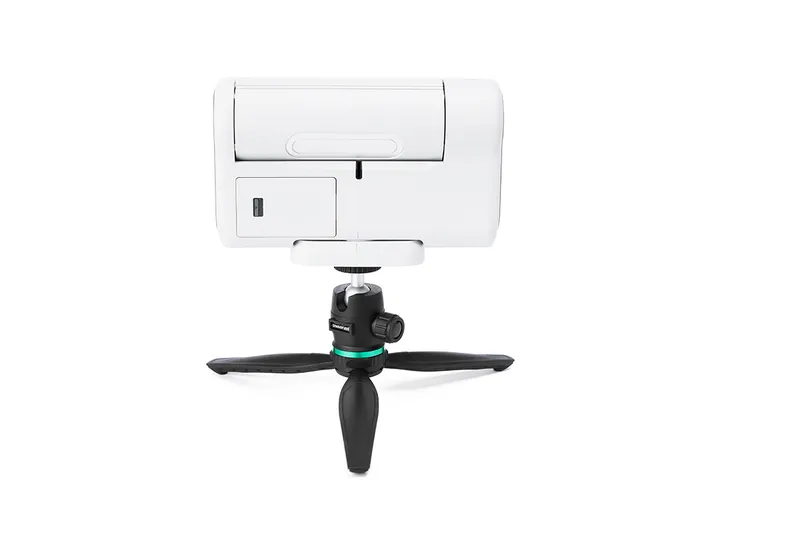
Unboxing and setting up
Our first impression was how small it looked and weighed, being easily held in one hand. Setting it down on our garden table, we powered it up.
The telescope provides its own Wi-Fi, so with the DWARFLAB app installed on our iPhone (Android app
is also available) we connected to the Dwarf II via our phone’s Wi-Fi settings and launched the app.
It also offers Bluetooth connection to help with transferring images from the telescope to your phone.
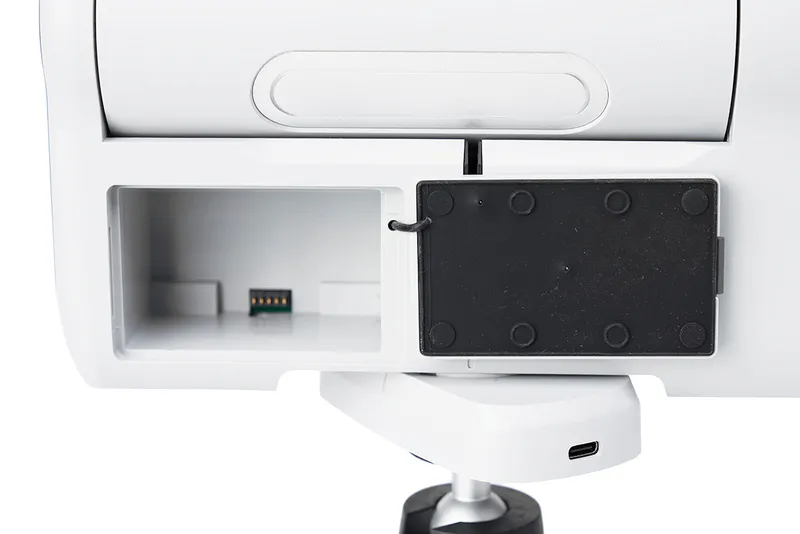
Dwarf II astrophotography
Our focus was on the Dwarf II’s astro imaging capabilities.
It is an altazimuth system and so the image frame slowly rotates as the images are stacked, as you’ll see in our unprocessed image of the Orion Nebula region below.
In ‘Astro’ mode you can use the ‘Feature’ button to bring up several menus, including the important initial calibration mode.
To calibrate, the Dwarf II takes images of different parts of the sky to plate-solve and work out where to point.
The ‘Confirm’ button must be selected in all menu selections.
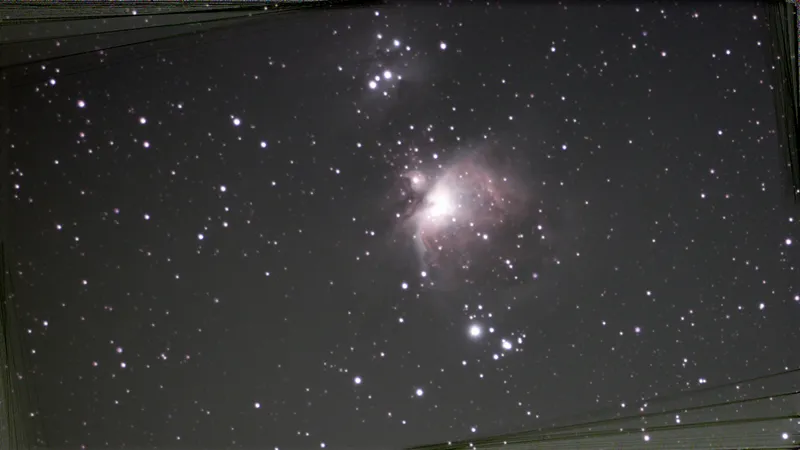
After calibration, you can choose from a limited selection of targets, which an upcoming firmware update is expected to expand to 500 objects.
When you select a target, the Dwarf II slews to it, plate-solves to provide a more accurate fix on the target, then begins to track.
If your favourite object is not listed, there is an option to manually input the coordinates, which proved useful at times.
With your target in view, you can then select the ‘More’ button to set the image format as FITS or TIFF, and the number of images you wish to take, up to 999.
The left-hand side menu options include exposure time, gain and others to adjust the initial image before you begin to take images in earnest.
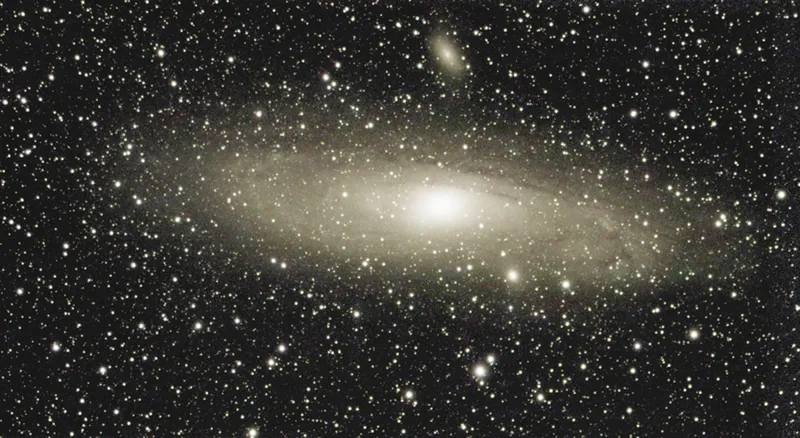
We chose captures of 15- and 20-seconds exposure and up to 200–300 exposures of the Andromeda Galaxy, M42, the Orion Nebula, the Pleiades and the Double Cluster (a total of 81 images).
Considering how simple the system was to set up, we were rewarded with reasonable images of each target.
It is worth noting that you can capture the images and then transfer them to your computer to process them with your own chosen astro software, which can improve the results.
We also imaged the Moon and, during the day, used the neutral-density filters (both must be installed) to image and view sunspots.
However, both the Moon’s and Sun’s discs were small.
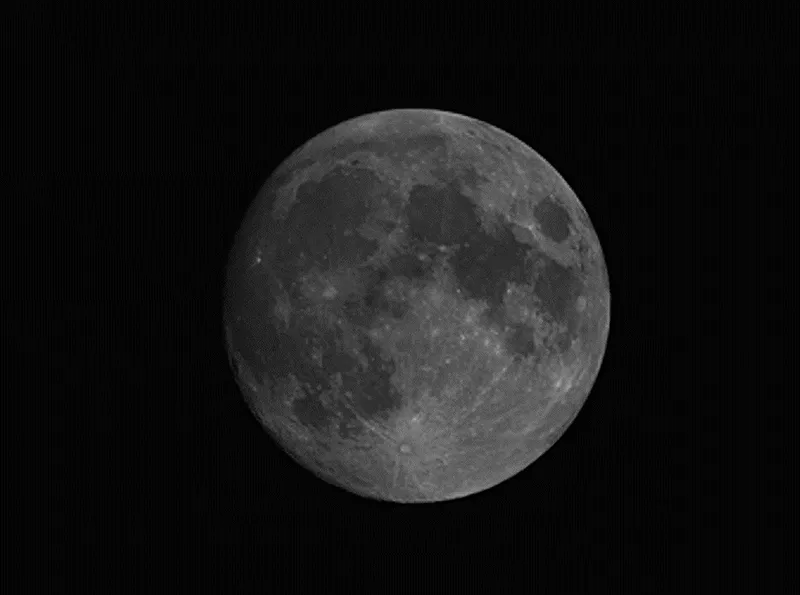
It should be noted that the target list does include the planets, but the Smart II’s only benefit was with capturing Jupiter’s Galilean moons; aside from that, the planets were too small for useful imaging.
As a simple-to-use, easy-to-set-up system, the Dwarf II is aimed at allowing anyone with little or no knowledge of the subject to image aspects of the night sky using their smartphone.
We found it quite fun to use and watch as the images built up on our screens, but experienced astrophotographers might find the aperture a little small for their liking.
Using the DWARFLAB app

The key to the Dwarf II is its control by smartphone or tablet via the DWARFLAB app (Google Play or Apple App Store).
The Dwarf II provides its own Wi-Fi network and, once connected, the screen switches to photo view.
From here you have access to a multitude of functions that give the app its versatility.
For astro imaging, calibration is necessary to allow the Dwarf II to perform Go-To manoeuvres to your selected target (selected from the built-in catalogue or by inputting coordinates).
At the time of writing, the catalogue was somewhat limited, but an upcoming update is expected to include 500 objects.
Once we got the hang of the interface, we found we could be imaging within five minutes of setting up the Dwarf II outside, with the most important astro settings being ‘Features’, focus and, on the left-hand side, the sliders controlling a multitude of factors, including exposure, gain, white balance and much more.
The only downside we found was occasionally we couldn’t save an image to the smartphone’s photo album, but this was a minor niggle.

Dwarf II 5 best features
Twin-lens system
The Dwarf II is equipped with a wide-angle and a telephoto lens. The wide-angle lens has
a 50o field of view and is used for aligning the system and pointing the telephoto lens at your target. The telephoto lens captures the 8MP astro images and is a 24mm lens working at f/4.2 with a field of view of 3o.
Tripod and mount attachment
The tripod is compact and suited to any flat, level surface. It has a height range of 13–17cm and can be adjusted to get the Dwarf II level. It is attached via a 1/4-inch thread which also means you can use a standard photographic tripod if you require more height.
Accessories
Along with the Classic package’s accessories – a 64GB micro SD card, plus adaptor and a battery – the Deluxe package is supplied with an additional battery, a magnetic twin filter holder and a storage case containing the two neutral-density filters for solar use and the UHC filter for light-polluted skies.
Power and battery
Power is supplied by a rechargeable 5600mAh battery which last three hours. It is charged via an 18W USB type-C charger or a USB power bank (not supplied), attached via the base port. The power indicator turns red during use and the battery level is shown by the four green lights.
Carry case
The soft carry case is well padded, giving good protection to the Dwarf II. With space for extra micro SD cards and a card adaptor in the zip-up section, plus a Velcro centre divider, it can store the Dwarf II with all its accessories for ease of travel.

Vital stats
- Price: £519 (Deluxe)
- Optics: Wide-angle and telephoto lenses
- Aperture: 24mm
- Focal length: 100mm
- Equivalent focal length: 48mm (wide) f/2.4, 675mm (tele) f/4.2
- Sensor: Sony IMX415 Starvis
- Extras: Carry case, micro SD card and adaptor, two ND filters, UHC filter, magnetic filter holder, extra battery
- Connectivity: Bluetooth 4.0, Wi-Fi 5GHz
- Weight: 1.2kg
- Supplier: 365 Astronomy
- Tel: 020 3384 5187
- www.365astronomy.com
Have you used the Dwarf II for astrophotography? Don't forget to send us your images and they could feature in a future issue of BBC Sky at Night Magazine.
This review appeared in the January 2024 issue of BBC Sky at Night Magazine
